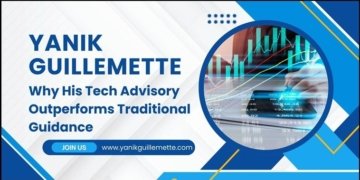Latest Published Report by Allied Market Research Titled, “Memory Chip Market by Type (Volatile (DRAM and SRAM) and Nonvolatile (PROM, EEPROM, NAND Flash, and Others)) and Application (Laptop/PCs, Camera, Smartphone, and Others) – Global Opportunity Analysis and Industry Forecast, 2017-2023”.
Request Sample Report @ https://www.alliedmarketresearch.com/request-sample/4537
Memory chips provide essential data storage in IoT and allow for real-time processing. It also supports the operations of connected devices. In addition, they help to reduce bandwidth use and latency for ML and AI-powered apps. Their features, such as encryption, support scalability and allow for adjustments in response to market dynamics. The IoT has become an integral aspect of modern life, with several interconnected devices employed across numerous applications. With the rapidly increased IoT integration, memory chips have become an essential component to allow the connected devices to operate smoothly.
Embedded NVM and eFlash memory chips enabling next-generation IoT applications
Embedded flash memory is highly desirable in IoT applications due to its strong endurance, requiring the storage of important data and code. The field programming capability provides great flexibility for last-minute system-level changes. The market for eFlash memory has witnessed a significant expansion. It is expected to grow further with the proliferation of IoT technologies due to its relatively high performance and high-density, capable of supporting most microcontroller-based applications.
For Purchase Enquiry at: https://www.alliedmarketresearch.com/purchase-enquiry/4537
Key memory products powering next-generation IoT devices include embedded MultiMediaCard memory, universal flash storage, and single-level cell flash memory. For instance, KIOXIA memory is extensively used in smart homes and smart cities. It powers a variety of smart health, industrial, and natural resources IoT applications. The company has identified applications for SLC and e-MMC. This includes smart appliances, infotainment systems, smart meters, biometric sensors, farm analytics systems, and seismic sensors. Next-generation IoT applications require a wider range of functions with a compact design and high energy efficiency. This increased demand for connected devices, advancements in memory technology, rising need for real-time data processing, and cost-efficiency are expected to boost the memory chip market.
STMicroelectronics’ Page EEPROM launch to reduce power & noise and extend battery life
On October 28, 2024, STMicroelectronics developed Page EEPROM, a unique memory solution blending Flash memory’s capacity and speed with EEPROM’s energy efficiency and durability. The new memory solution offered densities of 8 to 32Mbit, improving storage capacities over standard memory devices. It allowed byte-level write operations and firmware over-the-air updates. This provided users with easier manufacturing processes. Furthermore, the memory solution featured peak-current control, reducing power supply noise. It also extended battery life and confirmed a read speed of 320 Mbit/s-16 times faster than conventional memory devices.
Low power consumption and maximum performance
Next-generation IoT applications require a wider range of functions with a compact design and high energy efficiency in memory chips. For example, the usual layout topology of a six-transistor SRAM has not shrunk at the same rate as the process nodes. This means that the memory does not support higher density and is relatively expensive. It is thus increasingly uneconomical to use SRAM to meet the demands of the latest IoT applications that require high memory capacity. Although DRAM offers cost advantages over SRAM, as it consists of only one single transistor and capacitor, it also has some disadvantages. The biggest ones are the high pin count, high power consumption, and complicated integration. For applications without constraints in this respect, legacy SDR DRAM remains a possible option for existing systems. They are hardly appropriate for many cutting-edge, compact IoT systems.
Get Customization of the Report @ https://www.alliedmarketresearch.com/request-for-customization/4537?reqfor=covid
In July 2023, the Oregon State University and Baylor University researchers successfully attempted to reduce the energy consumption of the photonic chips. These were used in data centers and supercomputers. Their research was anticipated to be useful for data centers, that usually consume 50 times more energy per square foot of floor space than a typical office building.
Summing up
Memory chips provide the speed, efficiency, and scalability required to live seamlessly in a connected world. The latest innovations in the industry represent the progressions that are improving their competence along with minimizing energy consumption. Further research and development are being conducted to adopt the dynamic scalability that IoT encompasses. These improvements are expected to build a sustainable, cost-effective superstructure in the upcoming years.
Report Overview: https://www.alliedmarketresearch.com/memory-chip-market
Contact:
David Correa
1209 Orange Street,
Corporation Trust Center,
Wilmington, New Castle,
Delaware 19801 USA.
Int’l: +1-503-894-6022
Toll Free: +1-800-792-5285
Fax: +1-800-792-5285
help@alliedmarketresearch.com
Web:https://www.alliedmarketresearch.com
About Us:
Allied Market Research (AMR) is a full-service market research and business-consulting wing of Allied Analytics LLP based in Wilmington, Delaware. Allied Market Research provides global enterprises as well as medium and small businesses with unmatched quality of “Market Research Reports” and “Business Intelligence Solutions.” AMR has a targeted view to provide business insights and consulting to assist its clients to make strategic business decisions and achieve sustainable growth in their respective market domain.
We are in professional corporate relations with various companies, and this helps us in digging out market data that helps us generate accurate research data tables and confirms utmost accuracy in our market forecasting. Each and every data presented in the reports published by us is extracted through primary interviews with top officials from leading companies of domain concerned. Our secondary data procurement methodology includes deep online and offline research and discussion with knowledgeable professionals and analysts in the industry.
This release was published on openPR.

















